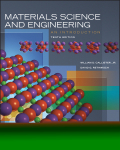
(a)
To explain:
The difference between oxidation and reduction electrochemical reactions:
(a)
Answer to Problem 1QAP
The difference between oxidation and reduction electrochemical reactions is explained as below:
Explanation of Solution
Electrochemical reaction is the process that involves electron transfer between two substances mostly a metal and an electrolyte. It includes oxidation and reduction reactions that occur simultaneously. Oxidation reaction involves loss of electrons by a molecule or an atom to form a cation. This causes increase in oxidation state. Reduction reaction involves gain of electrons by an atom to form an anion. This causes decrease in oxidation state. Thus, the basic difference between oxidation and reduction electrochemical reaction involve loss and gain of electrons in an atom, respectively.
(b)
To explain:
Which reaction (oxidation and reduction) occurs at anode and which at the cathode?
(b)
Answer to Problem 1QAP
The reaction (oxidation and reduction) occurs at anode and at the cathode is explained as below.
Explanation of Solution
Oxidation and reduction reactions occur at electrodes. Anode refers to negative electrode and cathode refers to positive electrode. Oxidation takes place at the anode as it involves loss of electrons. Reduction takes place at the cathode as it involves gain of electrons.
Want to see more full solutions like this?
Chapter 17 Solutions
Materials Science And Engineering
- my ID# 016948724. Please solve this problem step by steparrow_forwardPlease solve the following question in the picture, make sure you show all of your work and formulas you use. Thank you so much for your help!arrow_forwardMy ID# 016948724 please find the forces for Fx=0: fy=0: fz=0: please help me to solve this problem step by steparrow_forward
- My ID# 016948724 please solve the proble step by step find the forces fx=o: fy=0; fz=0; and find shear moment and the bending moment diagran please draw the diagram for the shear and bending momentarrow_forwardMy ID#016948724. Please help me to find the moment of inertia lx ly are a please show to solve step by stepsarrow_forwardplease solve this problem step by steparrow_forward
 MATLAB: An Introduction with ApplicationsEngineeringISBN:9781119256830Author:Amos GilatPublisher:John Wiley & Sons Inc
MATLAB: An Introduction with ApplicationsEngineeringISBN:9781119256830Author:Amos GilatPublisher:John Wiley & Sons Inc Essentials Of Materials Science And EngineeringEngineeringISBN:9781337385497Author:WRIGHT, Wendelin J.Publisher:Cengage,
Essentials Of Materials Science And EngineeringEngineeringISBN:9781337385497Author:WRIGHT, Wendelin J.Publisher:Cengage, Industrial Motor ControlEngineeringISBN:9781133691808Author:Stephen HermanPublisher:Cengage Learning
Industrial Motor ControlEngineeringISBN:9781133691808Author:Stephen HermanPublisher:Cengage Learning Basics Of Engineering EconomyEngineeringISBN:9780073376356Author:Leland Blank, Anthony TarquinPublisher:MCGRAW-HILL HIGHER EDUCATION
Basics Of Engineering EconomyEngineeringISBN:9780073376356Author:Leland Blank, Anthony TarquinPublisher:MCGRAW-HILL HIGHER EDUCATION Structural Steel Design (6th Edition)EngineeringISBN:9780134589657Author:Jack C. McCormac, Stephen F. CsernakPublisher:PEARSON
Structural Steel Design (6th Edition)EngineeringISBN:9780134589657Author:Jack C. McCormac, Stephen F. CsernakPublisher:PEARSON Fundamentals of Materials Science and Engineering...EngineeringISBN:9781119175483Author:William D. Callister Jr., David G. RethwischPublisher:WILEY
Fundamentals of Materials Science and Engineering...EngineeringISBN:9781119175483Author:William D. Callister Jr., David G. RethwischPublisher:WILEY





